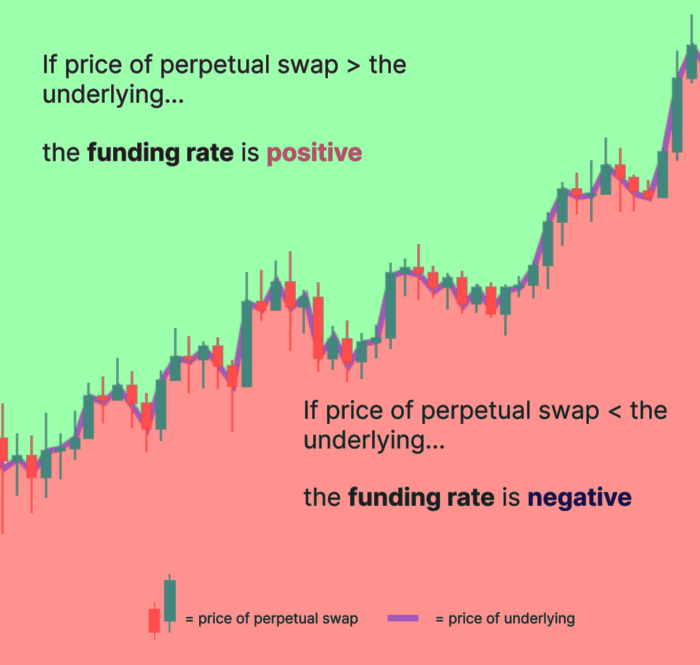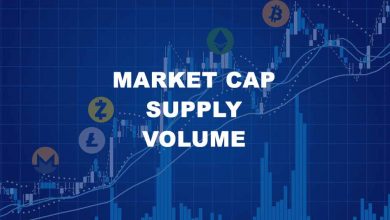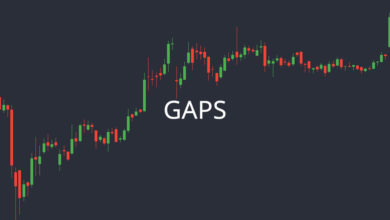What does funding mean in Bitcoin? BTC / ETH Funding rate explained
Previously on trading guides we’ve covered about CME gaps and explained what maker / taker fees are. Similarly here in this post we’ll explain the concept of funding rates in Bitcoin.
On social media you might have heard traders talking about funding rate or funding fees. “The next funding is highly negative, upcoming short squeeze.” “Bitcoin funding rate too high, a dump is imminent”.
Funding rate is a common mechanism that is only seen on trading platforms that offers perpetual contracts. Most of you know that when funding is positive, longs pay shorts. Likewise when the funding rate is negative, shorts pay to longs. But what is the concept behind funding rates?
What does funding rate or funding fees mean and how funding mechanism works? Why do we need them and how often they change? Also we’ll cover other elements such as how to check funding rate on BitMEX, Bybit and Binance futures? The fee you need to pay for long funding and short funding. The interval in which funding fees are paid, how is it calculated and what a predicted rate means? Also how they are used when trading Bitcoin & Ethereum perpetual swaps?
Funding definition:
In perpetual contracts funding is a primary mechanism that is used to ensure the contract price is always tethered to the spot price. It is how the price of perpetual swap contracts is kept close to underlying assets spot price. It is one of the main ingredients behind the perpetual swap contracts.
What is a funding rate?
Funding rate in perpetual contracts is a series of payments that is exchanged directly between longs (buyers) and shorts (sellers). On most exchanges the funding rate occurs every 8 hours. While the time at which the funding is paid may vary the concept remains the same across all exchanges.
When the funding rate is positive, long positions pay short positions. When the funding is negative, short positions pay long positions. This mechanism keeps the price of spot and futures constantly in line with each other.

Funding fees can be found on Bitcoin, Ethereum and every other altcoin perpetual contracts. Also it applies to both USDT perpetual and coin margined perpetual contracts. Only perpetual contracts and not on traditional futures that settles on a monthly or quarterly basis.
To understand funding let us first see how perpetual contracts are different from the traditional futures contracts.
Traditional futures contracts vs perpetual contracts
First of all both traditional futures contracts and perpetual contracts are derivative products where traders don’t buy or sell the underlying asset as they do on spot exchange.
Derivatives is a bit different than spot trading where you are not actually buying or selling Bitcoin. Instead you are betting on the price of an asset. On derivatives you are benefiting from the price movements without actually buying or selling Bitcoin. It comes with high leverage and they have high risk / return characteristics.
The value of the contract is designed to always follow the actual price of Bitcoin. If the price of the Bitcoin rises or drops, so does the price of the contracts.
Traditional futures contracts:
Traditional futures contract come with an expiration / settlement date. These contracts are settled once a month or quarterly depending on the exchange.
While the price of futures contract deviates from the assets (Bitcoin’s) base price they converge to spot price at the time of settlement.

On BitMEX, Bybit under Bitcoin and next to perpetual contracts you’ll usually find 2 or three other contract types. These are futures contracts that have expiry dates. When you are trading futures (Monthly or quarterly) your contract ends as it approaches settlement. On these contracts you neither pay nor receiving funding to hold a position. However once the contract is expired you will not have any open position.
Perpetual contracts:
Perpetual contracts, as the name suggests they are everlasting, permanent contracts. It is similar to the traditional futures except they have no expiry date and they never settle. So basically traders can keep their position open forever as long as they have enough margin to avoid liquidation.
Since perpetual contracts never settle the contract price may never converge and it could end up being largely different than the spot price. To prevent this from happening perpetual contracts uses funding mechanism. It ensures the price of contract and spot would periodically converge.
Depending on the exchange the funding occurs twice or thrice a day. It is a fee which one side of the contract pays to the other. Either longs pay shorts or shorts pay longs.
How funding rates change?
Funding rate helps in linking the price of the perpetual contract to the spot price of the underlying asset. It works by sending series of periodic payments between long positions and short positions. If funding is positive, longs pay shorts and if funding is negative, shorts pay longs.
Let us understand why and when funding rates switch between positive and negative.
In general
If the price of perpetual contracts > spot price = Funding rate is positive
If the price of perpetual contracts < spot price = Funding rate is negative

Okay, but what makes the contract price to go above and below the spot price?
Funding rate is usually correlated to the market sentiment. When the market is extremely bullish funding rates across all exchanges tend to go higher. Likewise when the market is bearish funding rates tend to go lower.
The price of contracts differs more from the spot price when there is high volatility and during strong market movements. Also another reason they deviate away from spot is because of the leveraged positions.
For example if the BTC / USD contract price trades above the spot price it means that many traders are in leverage long positions. On the other hand if BTC/USD contract price trades below the spot price it means there are more traders with short positions.
Now here is how funding mechanism works and helps keep the contract price stay close to the spot price.
How funding works?
Almost every exchange displays what the funding rate is and when it occurs. Also some exchanges like for example BitMEX even displays the funding rebate, the amount which a trader pays or receives.
For example if the price of Bitcoin perpetual contract is constantly trading above the spot price, the funding rate would increase. It means every trader who has long position open will have to pay short traders. It basically incentivizes short positions and discourages long position, thus lowering down the perpetual price towards the underlying.
Since traders are aware when the funding occurs and what it will cost most traders will close their long positions to avoid paying funding. Especially when the funding rate is too high; traders with high leverage will more likely close their positions to avoid paying funding. On the other hand more traders will open short positions to collect funding rebate. This incentive mechanism naturally brings the trading price towards the spot price.
This exchange of payment occurs every 8 hours and it helps anchor the last traded price to the global spot price. Once the funding is settled traders will continue to re open their closed positions.
How is funding rate calculated?
Every exchange has its own way of calculating and applying unique funding rates. However the formula for calculating funding rate is the same.
The funding rate mainly comprises of two components: The Interest rate (I) and the Premium Index (P). It is calculated by considering the interest rates of both the trading pair currencies (XBT/USD) and the premium index. It calculates interest rate and premium index every minute and performs an 8 hour time weighted average price over the series of minute rates.
On most exchanges this interest rate is set at 0.03% daily (0.01% every 8 hours). According to the price difference between mark price and last traded contract price the premium varies. It either yields a positive or negative funding rate and that decides who pays who.
This funding rate every 8 hours causes the contracts last traded price to move closer to the underlying spot price.
For more info on interest rate, premium rate component and how funding rate is calculated check this and this.
Where to find funding / predicted rates?
Funding rates are only applicable to traders with open positions. That is you only pay or receive funding if your position is held open at any of these times. If you close prior to the funding exchange interval then you’ll not pay any funding.
The funding rates are applied periodically and on most exchanges it is charged three times a day (8 hour intervals). This is the industry standard. However the time at which the funding is exchanged will vary from one exchange to another.
Here is how you can find funding and predicated rates on some most popular derivatives exchange.
BitMEX funding rate

On BitMEX, towards the left and under the leverage slider you’ll find contract details section. There you can find the funding rate and the fee which you’ll pay or receive for the next funding timestamp. If the funding rebate is in negative then you’ll have to pay. If it is in green then you’ll receive.
Move the cursor over the funding rate and it will display the predicted funding rate and fees. This will be applied for the next funding period. Also depending on volatility and according to Premium index and interest rate the predicted rate fluctuates until the previous funding is settled.
Bybit funding:
Similar to BitMEX, Bybit also applies funding rate every 8 hours to all open positions.

On Bybit just below the main navigation menu you’ll find this information. Along with funding rate it will also display the countdown at which the funding will be applied. Hover over and it will display the predicted rate and its countdown. However it does not display the fee information which you’ll be paying. You’ll have to calculate it manually.
Binance Futures:
Similar to Bybit, Binance Futures also displays the funding rate at the top. But it does not display the predicted rate or the fees you’ll be paying.
So how much funding do you pay or receive?
How to calculate the funding fee?
Funding rate is applied in proportion to the size of the traders position. That is the calculated funding rate is applied to the traders notional position size regardless of their leverage.
An example:
Let’s say you are long 10000 contracts (10000 USD) @ $10000. The current BTC price is $10000 and the funding rate is 0.01%. Whether you are 1x long, 10x long or 100x long. You’ll be paying the same fee which is $1.

Now here is how to calculate the funding fees.
Funding calculation:
- Inverse perpetual swap:
Funding rate payment = (Funding rate * Position notional) / Current BTC price
- USDT perpetual:
Funding rate payment = (Funding rate * Position notional) * Current BTC price
Example 1: Inverse Perpetual Swaps
Let us assume the funding rate is 0.02% (Positive, means long pay shorts). You have a position size of 50000 contracts and the current BTC price is $17200. Here is the calculation.
50000 * 0.02% = $10. Now divide this by current BTC value that is 10 / 17200 = 0.00058139 BTC or in other words 58139 Satoshi is the fee you will be paying.
You can use our Satoshi to USD converter tool to know the value of Satoshi.
Example 2: USDT perpetual
Let us assume the funding rate is 0.01% and you are long 20 BTC. Here is how to calculate funding if you are trading on USDT perpetual.
20 * 0.01% = 0.002 BTC. Now multiply this value to current BTC price that is 0.002 x 17200 = 34.4$. This is the funding fee you’ll be paying.
As you can see the leverage doesn’t matter at all. Its all your position size. Since it accounts the amount of leverage used funding rates can have a huge impact on ones PNL (Profit and Loss). Especially those with high leverage.
Hope that explains how to calculate the funding fee for your position size on both USDT perpetual and inverse perpetual swaps. Now here are few key points to note about funding rate.
Key points: Funding rate
- Every derivatives exchange uses funding mechanism on perpetual contracts. This maintains a balance between buy and sell ratio every 8 hours and it ensures the price does not deviate too much away from the index spot price.
- Funding is a fee that is not charged by the exchange. They do not gain anything from this. Funding rate is peer-to-peer. It is a fee that is exchanged directly between longs and shorts.
- Funding rate is calculated by the exchange and it varies over time on each exchange. If the rate is positive, then longs pay shorts. If the rate is negative, then shorts pay longs. The information on funding rate and fees will be displayed on the trading platform in advance.
- If you close your position before the funding period then you’ll neither pay nor receive any fee from funding.
- The funding fee only applies to perpetual contracts. Not to futures contracts.
- Funding rate usually works against popular traders. If most traders are long BTC then the funding rate tend to increase and that confirms the buying interest. If more traders are shorting Bitcoin then funding rate tend to go negative and that confirms the selling interest.
Historically Bitcoin has been on a bullish upward trending market. This is the reason why long traders have largely paid funding to the short traders.
The rate tend to vary as the trend turns bullish or bearish. If the rate diminishes then it shows less interest from traders. However do note that funding rate does not confirm that price for sure will move in a particular direction.
Hope this explains everything about funding. It applies to Bitcoin perpetual , Eth perpetual and every other altcoin perpetual contracts.
Thank you for reading. Hoping to see you in another interesting guide.



